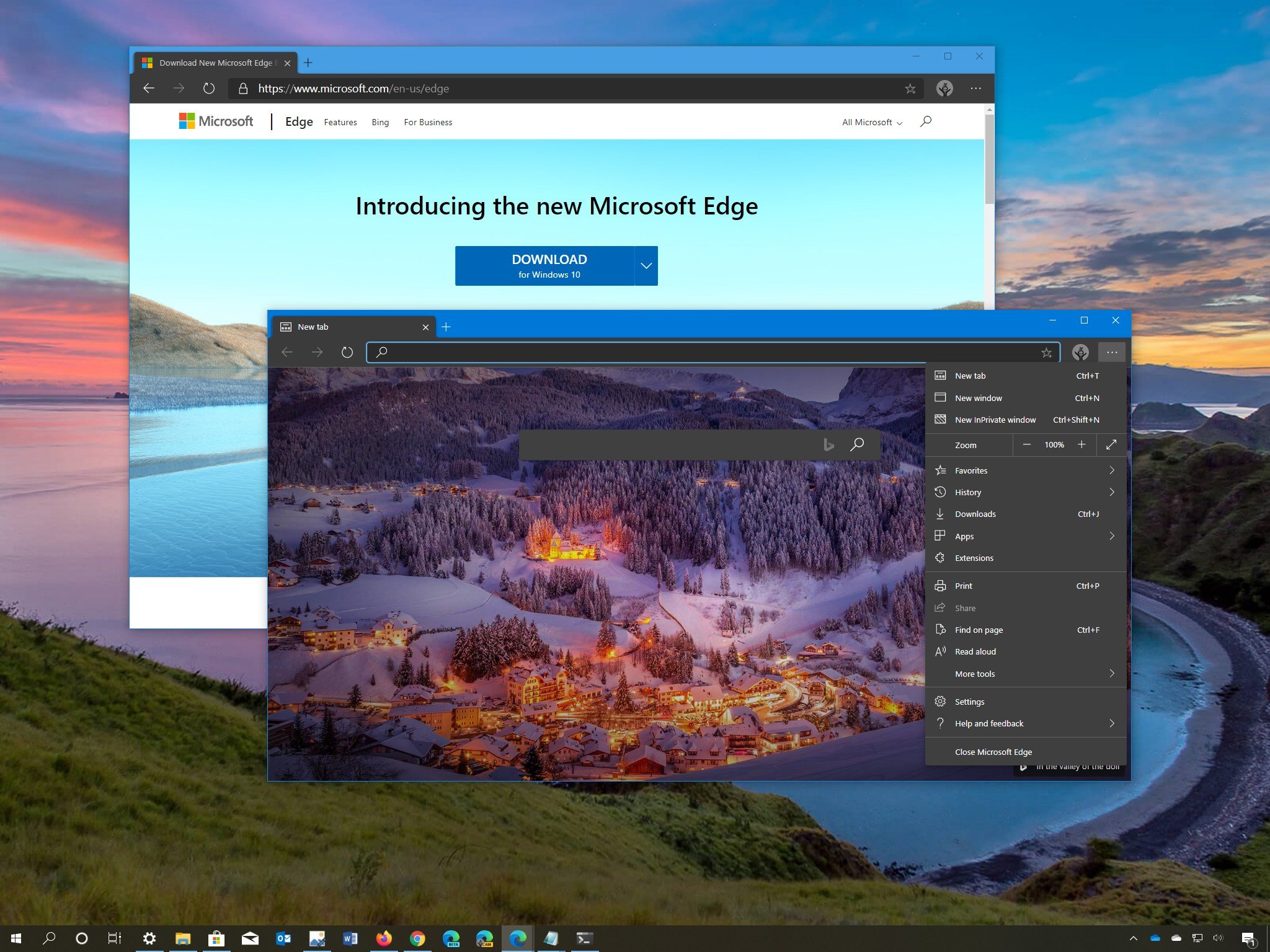How (and when) the new Microsoft Edge browser will roll out to Windows 10 users
The rollout of the new Microsoft Edge browser will take a while – Here's how the process will go.

Although the new version of Microsoft Edge based on the Chromium engine is now available in 90 languages, this is a multi-stage rollout that will take months before every installation of Windows 10 receives the new browser to replace the legacy version.
Phase one
During the first stage of the rollout, starting January 15, anyone who wishes to switch to Chromium Edge immediately has to download the standalone installer manually from the official Microsoft Edge website. (The installer is available for devices running Windows 10, Windows 8.1, Windows 8, Windows 7, and macOS.)
Once you downloaded the installer, you only need to double-click the file to start the automated process to install the new Microsoft Edge, which will replace (hide) the legacy version. Then the browser will launch automatically to complete the initial setup that includes the options to import settings from other browsers, configure new tab pages, and enable syncing for favorites, passwords, and settings when using a Microsoft account. (If you have another browser, such as Chrome, Firefox, or Opera, set as your default, the installation of Microsoft Edge won't change your settings.)
You can learn more about how to get started with the new browser in this comprehensive guide.
Phase two
If you're not in a rush to use the new browser, Microsoft is planning a second stage rollout that involves pushing the Chromium version of Edge through Windows Update during a future update in the next couple of months.
According to the company, the new version will deploy as an automatic update in the coming weeks to a select number of devices enrolled in the Release Preview ring of the Windows Insider Program.
If there are no blocking issues during the rollout for Insiders, then Microsoft will proceed to push the new Edge to other devices gradually.
Get the Windows Central Newsletter
All the latest news, reviews, and guides for Windows and Xbox diehards.
After you're in the new version, Microsoft Edge will update automatically independently from Windows 10 roughly every six weeks (no matter how it was installed) to introduce further improvements and features.
In the case that you have no interest in using the browser, you can use these instructions to block Windows 10 from installing Microsoft Edge automatically.
Microsoft Edge for organizations
As for organizations, the company ensures that administrators are in full control of the deployment, meaning that device running the Enterprise, Education, or Workstation editions of Windows 10 won't receive Microsoft Edge Chromium automatically through Windows Update.
Microsoft also says that "devices running Windows 10 Home or Pro Edition that are joined to an Active Directory or Azure Active Directory domain, are MDM managed, or are WSUS or WUfB managed, will also be excluded from this automatic update."
On network environments with unmanaged devices running Windows 10 Pro or Home, it's still possible to block the automatic delivery of Microsoft Edge using these instructions.
When organizations are ready to upgrade, they can use the Microsoft support documentation to find the details required to switch from the legacy to the Chromium version of Edge.
Alongside the desktop version of the browser for Windows 10 and macOS, Microsoft is 0expected to release additional variants for computers running Linux distros and devices using Qualcomm ARM processors. However, at this time, the company isn't revealing specific details of when these versions will become available, but if you have a Surface Pro X, you can now start testing the beta version of the browser.
Mauro Huculak has been a Windows How-To Expert contributor for WindowsCentral.com for nearly a decade and has over 15 years of experience writing comprehensive guides. He also has an IT background and has achieved different professional certifications from Microsoft, Cisco, VMware, and CompTIA. He has been recognized as a Microsoft MVP for many years.

